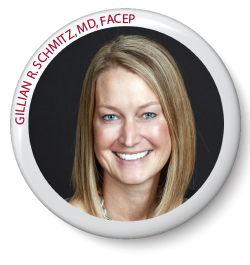
Each year, ACEP’s Council elects new leaders for the College at its meeting. The Council, which represents all 53 chapters, 39 sections of membership, the Association of Academic Chairs of Emergency Medicine, the Council of Emergency Medicine Residency Directors, the Emergency Medicine Residents’ Association (EMRA), and the Society for Academic Emergency Medicine, will elect the College’s President-Elect and four members to the ACEP Board of Directors when it “meets” virtually during ACEP20 in October. This month, we’ll meet the President-Elect candidates.
Explore This Issue
ACEP Now: Vol 39 – No 08 – August 2020Christopher S. Kang, MD, FACEP, FAWM
 Current Professional Positions: attending physician and faculty, core emergency medicine residency, Madigan Army Medical Center, Joint Base Lewis-McChord, Washington; attending physician, Olympia Emergency Services, PLLC, Providence St. Peter Hospital, Olympia, Washington; adjunct assistant professor, military and emergency medicine, Uniformed Services University of the Health Sciences, Bethesda, Maryland; clinical assistant professor, department of emergency medicine, University of Washington, Seattle; associate professor, physician assistant program, Baylor University, Waco, Texas
Current Professional Positions: attending physician and faculty, core emergency medicine residency, Madigan Army Medical Center, Joint Base Lewis-McChord, Washington; attending physician, Olympia Emergency Services, PLLC, Providence St. Peter Hospital, Olympia, Washington; adjunct assistant professor, military and emergency medicine, Uniformed Services University of the Health Sciences, Bethesda, Maryland; clinical assistant professor, department of emergency medicine, University of Washington, Seattle; associate professor, physician assistant program, Baylor University, Waco, Texas
Internships and Residency: emergency medicine residency, Northwestern University, Chicago
Medical Degree: MD, Northwestern University (1996)
Response
The impacts of market forces on health care have been the subject of research as well as continual public and private debates for decades. Although they constitute a complicated and especially vexing challenge for emergency medicine, changing annually at multiple levels as some forces rise and others ebb, I view their drivers and effects to be shaped by three factors: the stakeholders, industry landscape, and timing.
There were two initial stakeholders in health care, the patient and the physician. As the number of stakeholders drastically increased to now include hospitals, insurers, communities, regulators, plus both state and federal governments, the standing and authority of physicians depreciated.
Over the past decade, the emergency medicine landscape has been significantly affected by government policy, employer and hospital consolidation, and the rise of private equity. The Patient Protection and Affordable Care Act obligated fundamental changes in reporting (including metrics), reimbursement, and coordination of care while insurers and various states continue to attempt to refuse to pay for some emergency department care and EMTALA remains an “unfunded mandate.” These changes helped prompt the ongoing wave of employer, hospital, and health care system consolidations and the beliefs in larger market shares, networks, and greater operational efficiency. These changes also precipitated the rise of private equity in emergency medicine, which offered another source of financial shelter but also introduced another stakeholder.
As emergency medicine evolved, various stakeholders would align with each other. However, over the past decade and until this year, it has often seemed that all of the other stakeholders, including patients, were aligned against emergency physicians.
Over the past six months, COVID-19 has served as a stress test for emergency medicine, disrupting all of the market forces and challenging each stakeholder’s values and standing. While some beliefs and practices have held up, others have been revealed to be more promissory or unlikely to be realized. As severely as COVID-19 has affected you, your colleagues, and your practice, it also allows us to regroup, and reaffirm and regain our standing. Patients, communities, and some government agencies are now more aligned with us and recognize and value our leadership and commitment to high-quality patient care.
Your College has been assessing these market forces and their effects. Two years ago, I requested that one of the objectives for the Ethics Committee was to explore the impact of the business of emergency medicine on the patient-physician relationship. Last year, I supported the introduction and adoption of Resolution 58, The Role of Private Equity in Emergency Medicine, to encourage an open and frank discussion. As your Treasurer, I am knowledgeable about the College’s finances and their current limitations, and I encouraged staff to reassess and refine some operations to better position the College once COVID-19 subsides.
If elected, I will continue to utilize these views to facilitate discussion, advocacy, and action so that the College may take advantage of this opportunity to rebuild and sustain our professional standing and leading roles in the definition, management, evaluation, and improvement of quality emergency care for our patients and communities.
Gillian R. Schmitz, MD, FACEP
 Current Professional Positions: associate professor, department of military and emergency medicine, F. Edward Hébert School of Medicine, Uniformed Services University of the Health Sciences, Bethesda, Maryland; adjunct associate professor, department of emergency medicine, University of Texas Health Science Center, San Antonio
Current Professional Positions: associate professor, department of military and emergency medicine, F. Edward Hébert School of Medicine, Uniformed Services University of the Health Sciences, Bethesda, Maryland; adjunct associate professor, department of emergency medicine, University of Texas Health Science Center, San Antonio
Internships and Residency: emergency medicine, University of North Carolina
Medical Degree: MD, Loyola Stritch School of Medicine, Maywood, Illinois (2004)
Response
There have been dramatic market forces in the health care sector that have promoted consolidation of hospitals, insurance companies, and physician practice groups. Markets are driven by reimbursement, which is shifting over time from traditional fee-for-service to payment based on value. The industry’s response is to consolidate in an effort to increase market share and capture economies of scale. The positive effects of consolidation to date are an enhanced focus on care coordination, information technology, and integrated health care delivery in an effort to improve outcomes while reducing costs. Conversely, the negative effects of consolidation include unchecked growth, with subsequent concentration of influence and decision making into the hands of a shrinking number of business leaders. These business leaders, often non-physicians, may allow disparate priorities to displace the best interests of emergency department patients and emergency physicians.
I believe our patients’ interests are best served through physician leadership within every employer and ownership model. ACEP must ensure that our employment models prioritize high-quality care, safe clinical practice environments, fair and equitable compensation, due process rights, and most importantly, a physician voice to lead the business operations and strategic direction of our practices.
Decreased reimbursement and inability to obtain reasonable in-network rates coupled with higher operational costs for quality reporting and technology upgrades forced many smaller practices to close or sell to larger groups. Smaller hospitals lack the economies of scale and physician networks required to achieve care coordination at a lower cost. Many rural hospitals are on the verge of collapse due to lower patient volumes, poor payor mixes, and high deductible plans that create uncollectable bad debt. The number of hospital administrators and managers has grown almost exponentially as has the number of regulations that mandate measurement and reporting of quality, safety, and patient experience metrics. Less and less of the health care dollar is spent on actual patient care. Many counties in the United States are now monopolized by one or two insurance companies and health systems—leaving less competition, less choice, and potentially higher costs.
The role of private equity in physician practice is a complex topic that is controversial and potentially divisive. The evolution and maturation of large, clinically integrated physician staffing models was a predictable response to recent market forces and large-scale consolidation across the entire health care industry. The extent to which emergency physician group leadership is being supplanted by non-clinical corporate executive leadership varies across groups. We need to ask the tough questions and study the impact that different employment and leadership models have on our practice, autonomy, and the health of our patients. We need to ensure that our employers and other business entities that maintain ownership in our practices prioritize patient care and physician independent decision making. Whether we are employed by a hospital, small group, or larger physician organization, there will be increasing financial pressures that will impact us all.
I believe it is the job of the ACEP President to represent and advocate for all emergency physicians, regardless of whom they work for. We all practice under the same tent of emergency medicine, and we have real enemies that will use to their advantage any divisiveness and rancor among our ranks. ACEP must focus on goals that enhance the practice environment of all emergency physicians. We need protections in all practice settings, and ACEP is well positioned to be a champion for each of us.





One Response to “2020 ACEP Elections Preview: Meet the President-Elect Candidates”
August 23, 2020
Saba Rizvi M.D.Wow, I am very disturbed by Dr. Schmitz answer. Is Dr. Gillian Schmitz being funded by Private Equity ?
Her answer is a heinous attempt at political double speak. Clearly out of touch with a cornerstone issue for the specialty and a larger moral issue for the practice of medicine in general.
“Decreased reimbursement and inability to obtain reasonable in-network rates coupled with higher operational costs for quality reporting and technology upgrades forced many smaller practices to close or sell to larger groups.”
Here Dr. Schmitz demonstrates very little understanding of what “motivated” Practices to sell to PE for 8-10 x EBITA. It’s either clear ignorance or willful indifference to a issue that will set the course of the specialty for years to come.
I’d vote Dr. Kang unequivocally